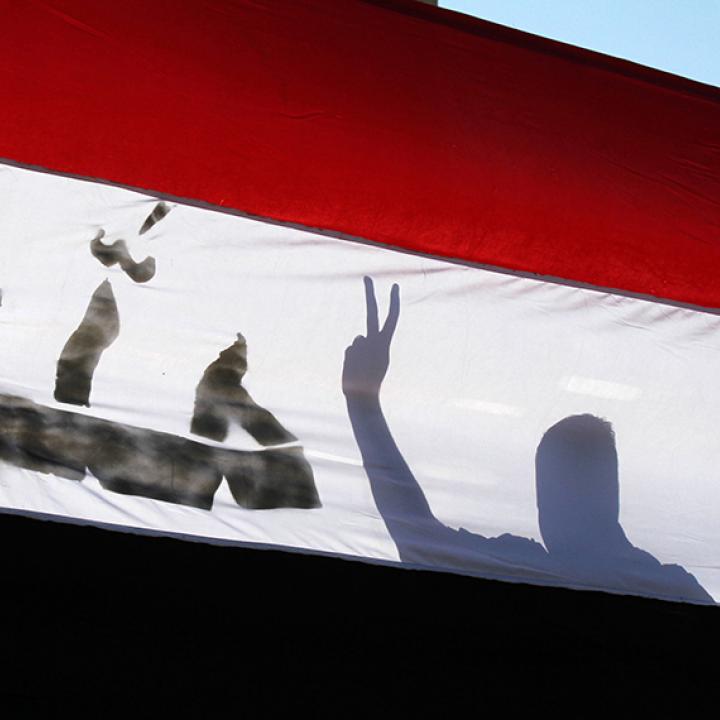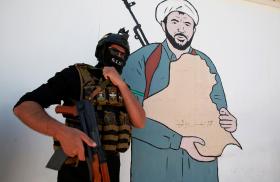
- Policy Analysis
- PolicyWatch 1982
Syria at War: Views from the Turkish and Lebanese Borders

On September 10, 2012, Andrew J. Tabler and Jeffrey White addressed a Policy Forum at The Washington Institute to discuss their recent trip to Lebanon and Turkey. Mr. Tabler is a senior fellow in the Institute's Program on Arab Politics, where he focuses on Syria and U.S. policy in the Levant. Mr. White is a defense fellow at the Institute, specializing in the military and security affairs of the Levant and Iran. The following is a rapporteur's summary of their remarks.
ANDREW J. TABLER
As the conflict between the Syrian government and the armed opposition grinds on, Bashar al-Assad's regime seems headed toward contraction and eventual defeat. To be sure, the timeframe and mechanics of this process are impossible to foresee, and the regime is still well armed and capable of striking countrywide. But these capabilities cannot be sustained forever, and Assad cannot control all of Syria indefinitely.
As the regime contracts and eventually crumbles, opposition fighters on the ground are poised to determine the course of Syrian politics. Armed elements are growing in influence, and as their political structures evolve, the distinction between fighters and unarmed activists is blurring. Compared to only six months ago, many more activists have affiliated themselves with armed groups, and the military opposition is becoming more well organized. Overall, though, the opposition remains heterogeneous, with groups differing from province to province and even on the city or village level.
Despite their complexity and diversity, these actors will undoubtedly be at the forefront of any transition toward a post-Assad Syria. Consequently, Washington must recognize their importance and build the knowledge and relationships that will enable the United States to play a role in the course of events. Thus far, the U.S. government has focused on external actors such as the Syrian National Council (SNC). Such groups may well wield influence, but only to the extent that they have direct contact with those leading the fight on the ground.
Moreover, U.S. planning has focused on what sort of political structure should come after Assad. This neglects the crucial fact that the regime is still standing, and that the manner of its defeat -- including who precipitates the fall -- will be the primary determinants of Syria's political future. Armed opposition elements on the ground have expressed growing frustration with the SNC and other outside actors for what they deem insufficient support. Although these sentiments have led to growing resentment toward the United States, this trend can be reversed. Doing so will require a full-bore effort from the U.S. government and the research community in Washington to develop detailed knowledge of these opposition actors and engage some of them.
This effort should also be a matter of strategic concern for U.S. policymakers, if for no other reason than a spiraling crisis in Syria could catalyze a sectarian conflict that destabilizes the entire region. Particularly in northern Lebanon, tensions between Sunnis and Shiites are palpable. Conversations with fighters in these areas exhibit a more sectarian hue than ever before, with individuals freely admitting that they are fighting not just Assad, but also Shiites from Iran, Hizballah, and even Iraq. And in a further sign of the conflict's potential expansion, Assad's forces have been shelling the Nahr al-Kabir valley in northern Lebanon in order to stem the movement of refugees and fighters across the border.
Although sectarian tension between Alawites and Sunnis is evident in Turkey as well, a more general concern is the manner in which armed opposition fighters appear to move freely in the southern part of the country. As the Turkish border becomes more porous, Ankara cannot easily determine which fighters are friendly and which may pose a threat to Turkey's own stability. A recent flare-up in the government's decades-old conflict with the Kurdistan Workers Party (PKK) has raised concerns that the border conditions are making violence and instability more likely.
JEFFREY WHITE
Syria's opposition groups can be examined on several different levels, each revealing key differences. The distinction between the fighters on the ground and external actors like the SNC is one level of analysis. The ideological layer -- a spectrum ranging from staunch secularists to Islamic extremists -- is another. Location is an important factor as well, with groups differing by province and by whether they are urban or rural in origin. Even individual fighting units and commanders show unique traits that are important to grasp.
The basic unit of the Free Syrian Army (FSA) is the katiba, a cohesive group of fighters that can range from 50 to more than 200 individuals. These units generally fall under the influence or authority of either a military council or a liwa -- a formation roughly corresponding to a brigade in military parlance. The relationship between katibas and their larger formations determines whether a coherent command structure emerges from the dispersed and heterogeneous opposition units. Command is more than just influence; it is the ability to give orders that will be consistently followed by subordinates. For the FSA, developing an effective command structure is important not just for the fight against Assad, but also for any forthcoming transition period.
On Syria's west coast, in Latakia, the military council appears to exercise command over local katibas. This also may be the case in Deir al-Zour in the east. The Aleppo military council, however, merely exercises influence over local units, not the ability to issue commands.
Emerging liwa formations may help the opposition broaden its command authority. Liwas are diverse in size and structure, with one commander claiming to control only three katibas while another claimed as many as sixteen. Notably, the liwa and the katiba commanders seemed to mutually acknowledge their superior-subordinate relationship. Leadership in these units is usually contingent on personal prestige, which is often connected to a given commander's family, religious, and tribal roles. Military experience confers prestige as well.
In terms of capabilities, opposition fighters display both material and intangible strengths. The FSA's logistical capabilities appear to vary from location to location. Some units complain of ammunition shortages while others maintain that they receive all the weaponry they need from sources within the regime. The Aleppo military council seems well developed in this regard -- according to a credible journalist in the area, it systematically equips local FSA units with weapons and ammunition, including PKC light machine-gun rounds, AK-47 rounds, and rocket-propelled grenades.
Beyond these material capabilities, the armed opposition's attitude and willingness to persevere will be crucial in determining the outcome of the fight. Currently, the rebels display a high degree of confidence, and they do not seem deterred by the regime's air and armored capabilities. According to a journalist embedded with an FSA unit during operations in Aleppo, FSA fighters moved by truck to their positions and waited for orders to attack, which they received over radios. And during the fighting, the local population gave them food, water, and information on the terrain. Throughout the operation, the journalist observed great confidence among the fighters even as regime aircraft moved on their positions.
More generally, opposition fighters seem to display relatively solid cohesion and discipline at the katiba-level during battle. They are willing to continue fighting in sustained clashes even as their comrades are slain or injured around them. They also make an effort to aid the wounded and retrieve the bodies of dead comrades for burial. This cohesion is partly a function of their shared local origin and personal ties. The formation of fighting units is often spontaneous as well, with residents in a town banding together against an imminent regime threat or in response to regime atrocities.
As for the war itself, the fighting remains highly fluid, with areas falling under opposition control only to be retaken at high cost by government forces. And even when opposition forces hold an area for some time, they are never immune to air and artillery attack. Looking ahead, Assad's regime will fall when his forces break -- and the Syrian army is on its way to breaking. The government is still determined to hold the entire country, and this over-commitment is bound to place unbearable stress on its capabilities. In the meantime, unfortunately, the regime is consciously inflicting causalities on civilians in an effort to break the connection between the populace and the armed opposition. If it succeeds in that effort, even if only on a local level, it will have made an important gain.
This rapporteur's summary was prepared by Tyler Evans.
Also read Turkey’s ‘Free Syrian Army’ Troubles, a report by Princeton lecturer and former Washington Institute research associate H. Akin Unver on FikraForum.com.



